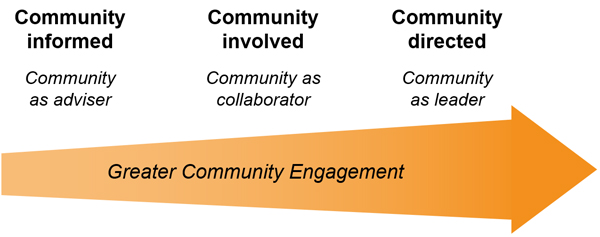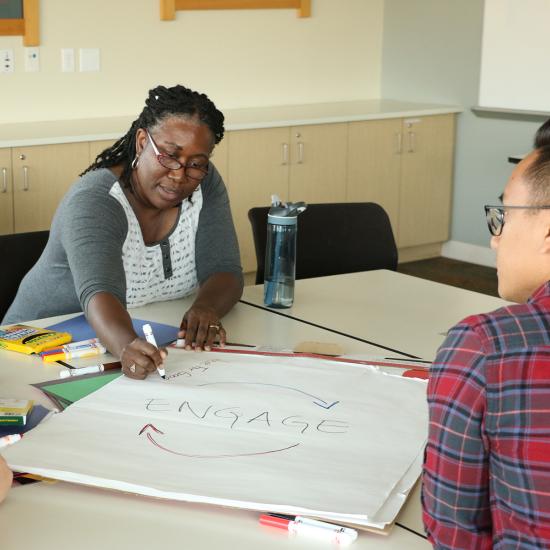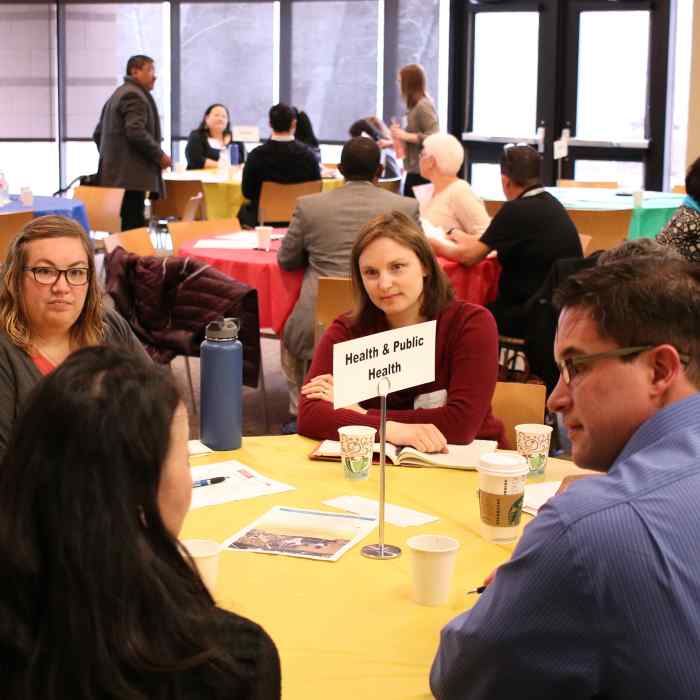Using a Framework for Community-Engaged Research
NOTE: In this blog post, we use the terms “community” or “communities” as broad terms to refer to groups of people who share common experiences or goals and who are likely to be impacted by a research study or the decisions the study informs.
The fundamental principle of community-engaged research is to involve the people who are most likely to be affected by an issue as partners in the research process. That way research becomes a tool to be used by communities, rather than knowledge taken from communities.
But what does that look like in practice? How might community-engaged research look different during the different stages of a study? What current practices or systems act as barriers to effective community engagement? How can those challenges be addressed? Those are just a few initial questions to consider when entering into this work as a partner, a funder, or a researcher.
Why community-engaged research matters
In the past and present, communities have been marginalized when researchers and decision-makers do not consider or seek time to understand the perspectives and experiences of those who will be impacted. To counter this historical and present day reality, organizations interested in conducting research in communities must work in ways that honor community experience and encourage increased community involvement. When possible, projects should support communities to direct the research that will impact their lives. This has implications for researchers working in partnership with communities and with the institutions and agencies that fund research and evaluation.
Wilder Research developed a framework to guide community-engaged research studies, and to establish common language that we can use internally and externally with clients, partners, and funders. This framework was shaped by our experience and information published by other organizations (including SoLaHmo and the University of Minnesota, Nexus Community Partners, and the University of Kansas). It helps us work with our partners to clearly consider our role as a research partner in each phase of the project and in how decisions are being made. Its value establishes a common language and provides a simple way to describe multi-faceted, on-the-ground, relationship-focused work.
A framework for community-engaged research
Community-engaged research is a continuum where community plays roles as advisors, collaborators, or leaders to shape and implement a study or evaluation. On one end of the spectrum is community-directed research, often referred to as community-based participatory action research or CBPAR, where community leads all aspects of a project, from developing the research questions to determining how information is analyzed and presented. When Wilder Research works with communities at this level, we’re asking, “How can we support you?” For example, after creating and administering a web survey, the Minnesota Transgender Health Coalition asked Wilder Research for help analyzing the results and presenting the findings.

On the other end of the spectrum is community-informed research, where community members advise on a study, giving input to help refine the research questions and inform the data collection approaches, and providing feedback to final reporting materials and dissemination plans. In these types of projects, community input can certainly shape the direction of the study, but community members tend to serve in an advisory capacity. For their most recent community health needs assessment, Children’s Hospitals and Clinics of Minnesota convened an advisory committee comprised of people who represent and lead organizations who serve specific cultural communities to determine the research questions, recommend data collection methods, and identify and prioritize community health needs.
Community-involved research, which falls in the middle of our framework, describes a wide range of ways to collaborate with community partners. This could include subcontracting with organizations to gather data, researchers serving an advisory role to community partners as they analyze and interpret data, or co-authoring reports and co-presenting research findings. In the Speaking for Ourselves study, community members directed multiple aspects of the study and held various roles, including as members of a decision-making advisory committee and as hired data collection staff.
The framework in practice
The community-engaged research approach can vary over the life of a project. For example, at Wilder Research, a community-based organization may approach us with an issue they would like to explore (community-directed research), decides that with their organization’s capacity, they would like to advise on the study methods and interpretation of results (community-informed research), then co-creates a final report and presentation of the findings (community-involved research).
While a framework alone doesn’t result in a change in practice, it can be an important reference point. It is a way to be intentional and transparent in how you work with community and can encourage partners to identify opportunities for more community involvement. In our work, it also helps us consider how we support all levels of community-engaged research, from the design and implementation of a research project to our consultation with funders and institutions that want to emphasize community involvement.
As we’ve been more intentional in using this framework, we’ve learned more about how to effectively partner with communities and to work with funders to support community-engaged research. Some of the things we’ve learned will be shared in upcoming blogs. We hope to hear from you as you use this framework or other tools to support community-engaged research in your work.
Melanie Ferris was a research scientist at Wilder Research.

